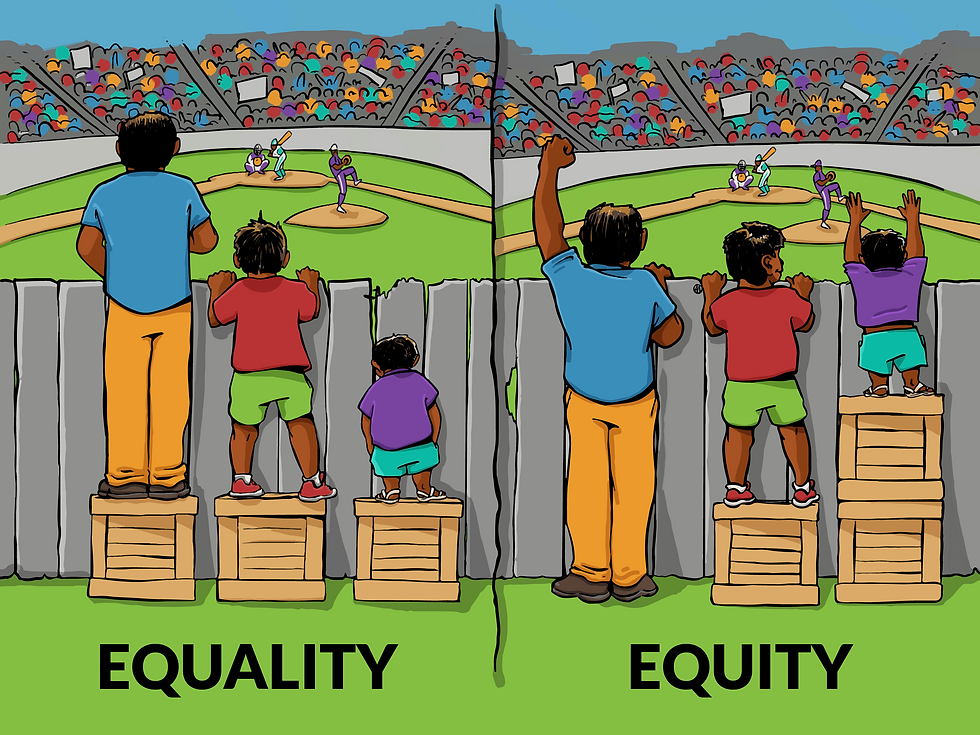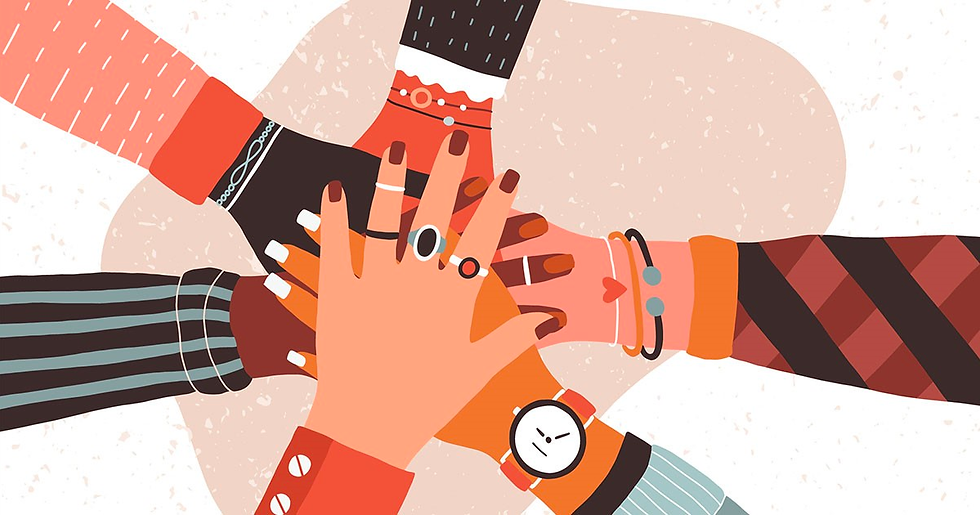The Gender Issue: What is Gender Equality and why is it so scary?
- adelefox4
- Nov 14, 2022
- 4 min read
Updated: Dec 10, 2022
By now I'm sure you've heard about how men and women should be treated as equals in the professional, sporting and domestic worlds, but what exactly is gender equality and what does it mean for everyday life? Gender equity or equality is not something to be scared of as many men on the internet may try to have you believe. Equality is not about having women 'take over the world' and reduce the fundamental rights of men (god forbid they come second for once), it is simply about having those same basic and fundamental rights reflected across all genders.
Who put men in charge anyway?..

What is the difference between gender equity and equality?
Equality is the goal; equity is the pathway
Equality is the act of giving everyone exactly the same thing. It is treating everyone the same, providing identical support for everyone and not taking into account individual circumstances or journeys.
And whilst equality is the goal across the board, we know that this isn't a realistic goal in the gender space (yet!).
Equity takes into account the additional support that is needed by women in order for them to catch up to the point that men are already at.
Basically, if we provide equal support for men and women from this point forward we will never reach equality as men will continue to stay just as far ahead as they currently are.
If you're a visual person, perhaps the below graphic may help you understand the concept:

No, you don't have to be a radical feminist to care about equality!
Gender equality is everyone's problem: it's not an extreme concept, it's a fundamental right.
If reading this article teaches you one thing, I pray that it is the fact that you don't need to be a radical feminist to care about gender equality. In fact, I would argue that you can mostly ignore politics and the patriarchy all together because caring about equal rights really isn't that complicated (yet, here we are - so maybe I'm wrong).
There are some really simple ways to begin your education on gender equality and some even easier ways to show your support and become an ally.
Talk about it. Bring gender equality up at work, at home, or at your local sports club. Learn from the experiences of the women and girls around you. Take the time to listen to them and consider ways you could elevate them in your own environment.
Support female role models. Read, watch and share the work of some of the amazing females that we have in sport, music, business and politics.
Share the care at home and help out around the house. Does your wife/partner/mum do most of the cooking, cleaning and caregiving in your household? Why not provide some meaningful support to spread the load? It is an unfair expectation that females will take on a majority of the work around the house.
Continue to educate yourself. Reading this article is an amazing start, but don't stop there! Read the resources that pop up on your social media, in the news and within your networks and challenge yourself to apply your learnings each and every day .
Lets keep it simple: some examples of gender inequality to help you relate
The gender pay gap
In Australia in 2022, men earn 17% more than females. To put this into perspective, for every $100 a man makes, a female earns $83.
The unfortunate reality is that a lot of the industries women elect to work in are underpaid. Consider nursing, teaching and hospitality vs engineering, finance and technology. Unfortunately, for whatever reason, a lot of the jobs that women select due to interest, flexibility and gendered norms in education are underappreciated and underpaid in Australia. You don't even need to delve into the recruitment discrimination, unconscious bias and sexist work environments that keep many women from entering the higher-paying, male-dominated industries.
The good news: experts predict that if we keep improving at the current rate, pay equity will be reached in 2059.... Just in time for my great-granddaughters to enter the workforce (assuming climate change hasn't killed us all by then, but that's a whole other story..)
A world designed for men
Ok now let me take you through a few examples of how normal life is tailored to males:
The standard office temperature was set back in the 1960's and based off the metabolic resting rate of the average man. It has now been found that this standard temperature is 5 degrees lower than what the comfortable temperature for females would be. No wonder we see so many women sitting at their desks with a blanket on in the middle of summer! This may sound funny at the surface, but the reality is that an unproductive workforce doesn't do anyone any favours.
Toilet queues! I'm not sure that I need to explain this one as every single person has experienced or seen the ridiculous lines for female toilets at events or venues. The reason for this? Equal-sized male and female bathrooms. Equal - perfect right?! Wrong! The requirement of women's bathrooms to have cubicles rather than urinals means that there are far fewer toilets in women's bathrooms compared to men, not to mention the time it takes for women to physically use the toilet compared to their male counterparts.
Women are 47% more likely than men to be seriously injured when involved in a car accident and 17% more likely to die from a car accident - despite the fact that men are far more likely than women to be involved in an accident in the first place. This is all because cars are designed for the male figure. Female's are more likely to have to sit with their seat further forward, putting women at higher risk of frontal and internal injuries. Why? Car crash test dummies are based on the average body (male body...) so testing does not take into account the weight or shape of the female body.
Is that all?
No, and it's far from it! But this may just be the starting point for you. I hope that reading this article will provide you with enough context and understanding to continue your journey - whether that be through further research or just through having a conversation with a friend.
Visibility is the one thing that we can all do to help alleviate the issues of gender inequality, and through having conversations, interacting with news and sharing on social media we can all contribute to making a difference.




Comments